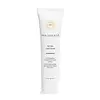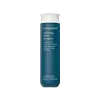What's inside
What's inside
 Key Ingredients
Key Ingredients

 Benefits
Benefits

 Concerns
Concerns

 Ingredients Side-by-side
Ingredients Side-by-side

Water
Skin ConditioningCetearyl Alcohol
EmollientKaolin
AbrasiveGlycerin
HumectantVinegar
Charcoal Powder
AbrasiveOryza Sativa Bran Oil
EmollientBehentrimonium Methosulfate
Olea Europaea Fruit Extract
BleachingButyrospermum Parkii Butter
Skin ConditioningStearalkonium Chloride
PreservativeHydrolyzed Quinoa
Skin ConditioningEpilobium Angustifolium Flower/Leaf/Stem Extract
Skin ConditioningPanthenol
Skin ConditioningPotassium Sorbate
PreservativeHydrolyzed Adansonia Digitata Seed Extract
Sodium Levulinate
Skin ConditioningStearyl Alcohol
EmollientThiamine Hcl
MaskingBenzyl Alcohol
PerfumingSodium Benzoate
MaskingGlycine Soja Oil
EmollientCananga Odorata Flower Oil
MaskingCitrus Aurantium Dulcis Peel Oil
MaskingLavandula Angustifolia Oil
MaskingPogostemon Cablin Leaf Oil
MaskingSalvia Sclarea Oil
MaskingLinalool
PerfumingLimonene
PerfumingWater, Cetearyl Alcohol, Kaolin, Glycerin, Vinegar, Charcoal Powder, Oryza Sativa Bran Oil, Behentrimonium Methosulfate, Olea Europaea Fruit Extract, Butyrospermum Parkii Butter, Stearalkonium Chloride, Hydrolyzed Quinoa, Epilobium Angustifolium Flower/Leaf/Stem Extract, Panthenol, Potassium Sorbate, Hydrolyzed Adansonia Digitata Seed Extract, Sodium Levulinate, Stearyl Alcohol, Thiamine Hcl, Benzyl Alcohol, Sodium Benzoate, Glycine Soja Oil, Cananga Odorata Flower Oil, Citrus Aurantium Dulcis Peel Oil, Lavandula Angustifolia Oil, Pogostemon Cablin Leaf Oil, Salvia Sclarea Oil, Linalool, Limonene
Water
Skin ConditioningSodium Lauroyl Methyl Isethionate
CleansingCocamidopropyl Hydroxysultaine
CleansingSodium Methyl Cocoyl Taurate
CleansingDecyl Glucoside
CleansingCetearyl Alcohol
EmollientGlyceryl Caprylate/Caprate
EmollientCetyl Alcohol
EmollientCetyl Stearate
EmollientCharcoal Powder
AbrasiveBetaine
HumectantSodium Cocoyl Alaninate
Tetrasodium Glutamate Diacetate
Hydroxyphenyl Propamidobenzoic Acid
Skin ConditioningSodium Polystyrene Sulfonate
Emulsion StabilisingPEG-5 Ethylhexanoate
EmulsifyingGlyceryl Stearate
EmollientIsostearyl Isostearate
EmollientStearic Acid
CleansingPotassium Cetyl Phosphate
EmulsifyingGlycerin
HumectantSteareth-20
CleansingPEG-75 Stearate
Trideceth-9
EmulsifyingCeteth-20
CleansingAcrylates/C10-30 Alkyl Acrylate Crosspolymer
Emulsion StabilisingParfum
MaskingSodium Hydroxide
BufferingPropanediol
SolventEthylhexylglycerin
Skin ConditioningHydroxyacetophenone
AntioxidantLinalool
PerfumingHexyl Cinnamal
PerfumingCitronellol
PerfumingLimonene
PerfumingWater, Sodium Lauroyl Methyl Isethionate, Cocamidopropyl Hydroxysultaine, Sodium Methyl Cocoyl Taurate, Decyl Glucoside, Cetearyl Alcohol, Glyceryl Caprylate/Caprate, Cetyl Alcohol, Cetyl Stearate, Charcoal Powder, Betaine, Sodium Cocoyl Alaninate, Tetrasodium Glutamate Diacetate, Hydroxyphenyl Propamidobenzoic Acid, Sodium Polystyrene Sulfonate, PEG-5 Ethylhexanoate, Glyceryl Stearate, Isostearyl Isostearate, Stearic Acid, Potassium Cetyl Phosphate, Glycerin, Steareth-20, PEG-75 Stearate, Trideceth-9, Ceteth-20, Acrylates/C10-30 Alkyl Acrylate Crosspolymer, Parfum, Sodium Hydroxide, Propanediol, Ethylhexylglycerin, Hydroxyacetophenone, Linalool, Hexyl Cinnamal, Citronellol, Limonene
Ingredients Explained
These ingredients are found in both products.
Ingredients higher up in an ingredient list are typically present in a larger amount.
Cetearyl alcohol is a mixture of two fatty alcohols: cetyl alcohol and stearyl alcohol. It is mainly used as an emulsifier. Emulsifiers help prevent the separation of oils and products. Due to its composition, it can also be used to thicken a product or help create foam.
Cetearyl alcohol is an emollient. Emollients help soothe and hydrate the skin by trapping moisture.
Studies show Cetearyl alcohol is non-toxic and non-irritating. The FDA allows products labeled "alcohol-free" to have fatty alcohols.
This ingredient is usually derived from plant oils such as palm, vegetable, or coconut oils. There is debate on whether this ingredient will cause acne.
Due to the fatty acid base, this ingredient may not be Malassezia folliculitis safe.
Learn more about Cetearyl AlcoholCharcoal powder comes from grounded charcoal. Charcoal can originate from peat, bamboo, coal, wood, coconut shell, or petroleum.
This ingredient has absorbent properties, making it great at absorbing oil.
Glycerin is already naturally found in your skin. It helps moisturize and protect your skin.
A study from 2016 found glycerin to be more effective as a humectant than AHAs and hyaluronic acid.
As a humectant, it helps the skin stay hydrated by pulling moisture to your skin. The low molecular weight of glycerin allows it to pull moisture into the deeper layers of your skin.
Hydrated skin improves your skin barrier; Your skin barrier helps protect against irritants and bacteria.
Glycerin has also been found to have antimicrobial and antiviral properties. Due to these properties, glycerin is often used in wound and burn treatments.
In cosmetics, glycerin is usually derived from plants such as soybean or palm. However, it can also be sourced from animals, such as tallow or animal fat.
This ingredient is organic, colorless, odorless, and non-toxic.
Glycerin is the name for this ingredient in American English. British English uses Glycerol/Glycerine.
Learn more about GlycerinLimonene is a fragrance that adds scent and taste to a formulation.
It's found in the peel oil of citrus fruits and other plants such as lavender and eucalyptus. The scent of limonene is generally described as "sweet citrus".
Limonene acts as an antioxidant, meaning it helps neutralize free radicals.
When exposed to air, oxidized limonene may sensitize the skin. Because of this, limonene is often avoided by people with sensitive skin.
The term 'fragrance' is not regulated in many countries. In many cases, it is up to the brand to define this term. For instance, many brands choose to label themselves as "fragrance-free" because they are not using synthetic fragrances. However, their products may still contain ingredients such as essential oils that are considered a fragrance.
Learn more about LimoneneLinalool is a fragrance and helps add scent to products. It's derived from common plants such as cinnamon, mint, citrus, and lavender.
Like Limonene, this ingredient oxidizes when exposed to air. Oxidized linalool can cause allergies and skin sensitivity.
This ingredient has a scent that is floral, spicy tropical, and citrus-like.
Learn more about LinaloolWater. It's the most common cosmetic ingredient of all. You'll usually see it at the top of ingredient lists, meaning that it makes up the largest part of the product.
So why is it so popular? Water most often acts as a solvent - this means that it helps dissolve other ingredients into the formulation.
You'll also recognize water as that liquid we all need to stay alive. If you see this, drink a glass of water. Stay hydrated!
Learn more about Water